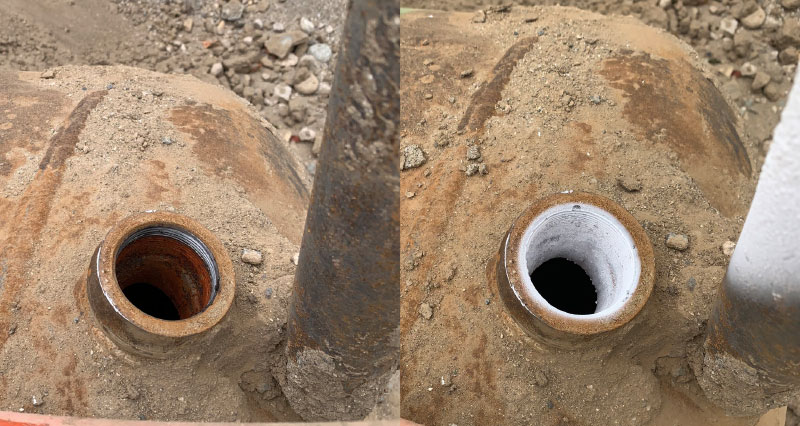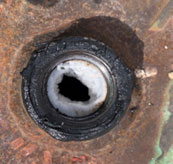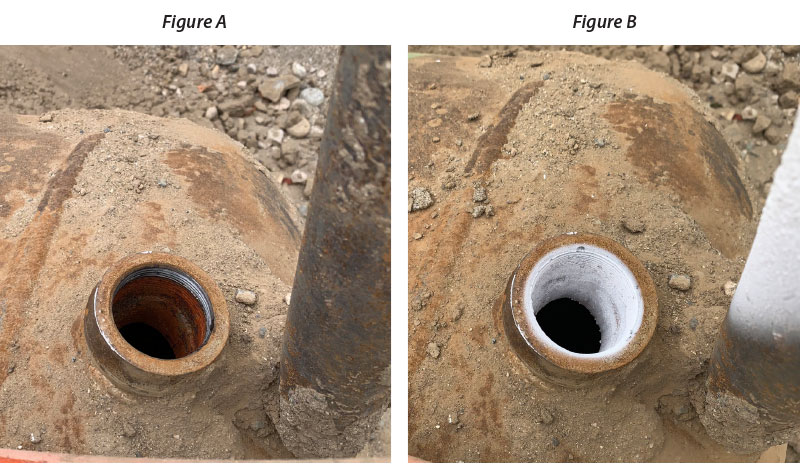October 2, 2023
- Pipeline
- Canada
- Pipeline Services
Pipeline Corrosion Prevention and Preservation

Vapour Phase Corrosion Inhibition (VPCI) Application
Successful VPCI application of 12 pump stations, covering approximately 8,200 m2 of surface area for a major pipeline expansion project. VPCI project costs are approximately 80% less when compared to traditional filming pig applications.
Furthermore, the project’s unwavering commitment to safety resulted in ZERO waste generation and spills.
Vapour phase corrosion inhibition (VPCI)
VPCI involves injecting specialty formulated corrosion inhibitors into pipelines using an atomizer or injection quill with the assistance of nitrogen.

The injected chemical is converted into a vapour that disperses throughout the enclosed space ensuring comprehensive coverage. This includes hard to access crevices and pitting on the metal surfaces.
A protective film is created when the molecules adhere to the metal surface due to temperature differences.
As an added benefit, VPCI can migrate to the topside of the pipeline, effectively addressing topside corrosion, a prevalent issue in the pipeline industry. Studies have found that VPCI applications are effective up to one year after application.
Pre-engineering design
This preservation posed a unique set of challenges. Firstly, the project was schedule driven as several stations allotted a single day for VPCI application before connecting to the main pipeline. Additionally, the common VPCI practice also required two injection points—one for chemistry and another for a medium like nitrogen or air to distribute the chemistry through the pipeline.
Injection durations were reduced up to 50% by adjusting chemical injection rates and corresponding nitrogen rates to meet tight deadlines. Specialty nitrogen and pumping equipment allowed for the injection of precise flow rates and pressure, ensuring the right amount of chemistry was delivered to the correct locations.
FQE also designed a customized injection manifold that combined the nitrogen and chemical injection stream before introducing the mixture into the client’s system, eliminating the need for a second injection point. This innovative solution resulted in significant cost savings for the client as the requirement for additional drilling, cutting, or welding to accommodate more than 28 injection points was removed altogether.
Advantages of VPCI
Saves Time and Costs: VPCI offers a highly cost and time-effective alternative compared to conventional filming pig methods. Achieving the same results while reducing up to 80% of the pigging treatment cost.
Elimination of Waste Products: VPCI produces ZERO waste generation as it is designed to coat the internals of the piping without the need to fill the entire line. Additionally, this greatly reduces the possibilities for spills or environmental release.
Comprehensive Coverage: VPCI can protect metal surfaces, including crevices, welded joints, and other hard-to-reach areas, where traditional corrosion protection methods may not be as effective due to accessibility.

Highlights
Innovative engineering led to cost reductions associated with additional drains/vents
Precisely planned injection rates and concentration ensure adherence to tight deadlines
VPCI application has ZERO waste generation and spills
Compared to conventional filming pig methods, VPCI can achieve the same results at 80% of the pigging treatment cost